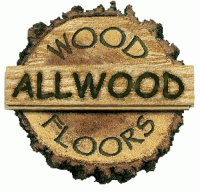Here are some Frequently Asked Questions about floor sanding, floor preparation, floor sealing etc.
General
It depends on use and how the floor is maintained, but we expect that the floor should not be redone for at least 5 years and typically 10 years.
Factors that make floor sanding more frequent include wearing outdoor shoes inside or having pets (dogs or cats) or young children. If you have a gravel drive, grit can be picked up from shoes and brought inside; equally, dragging furniture across a floor will rapidly cause damage.
In wooden floors, the top layer of wood is worn away, using sandpaper, in order to remove a stained and damaged surface. The process allows the fresher, newer wood, that sits below the surface to be revealed. The professional way is to use a dust free belt sander which removes the majority of sawdust as it is created, thus keeping the room in question cleaner and helping to create an even result.
Certain wood finishes can clog the abrasive material used to strip the wood back and so this has to be removed first to improve results. Sanding is not of course the only treatment needed on old wooden floors. Sometimes a floor will have been badly pitted, or split and need filling. Floorboards or parquet may be broken or missing and need replacement and repair before the floor can be sanded. In addition, some floorboards have large or unsightly gaps that need filling before the floor is finished and different techniques may be used if appropriate, to achieve this where possible. If a floor has repairs, care must also be taken to replace the wood with an appropriate wood and pattern, or the end result will be affected. For best results the wood types will be matched and similar age wood replacements used to fill gaps if deemed necessary by us.
Once a floor has been repaired and sanded, various finishes are available to protect the newly exposed wood and help keep the flooring in good order.
It depends and we need to have a look. However if you have a an average-sized room (bedroom, lounge or hallway for instance) it should take a day to sand and a further day to hand finish and varnish/wax or oil.
If your floor needs repairing then this can add to the time as we might have to wait for filler and replacement wood to be fully fixed in place. You should also factor in time for the varnish, sealant or oil to dry before moving your furniture back in and walking on the floor.
The beauty of wooden floors is that they can be fixed relatively easily and cheaply. We will fill holes and repair damaged areas. Some floors mat look beyond repair but let us have a look first and we will be able to tell diagnose problems.
Load More
Preparation
Generally sanding the floor should be left until the after any plumbing or electrical work as this might involve some disruption to the floor. Decoration of the walls such as wallpapering and painting can be done after the floor sanding as long as the decorators are very careful about protecting the newly sanded floor.
All the furniture will need to moved out of the room. We will seal doors and other areas. Our sanding machines are dust free industrial grade pieces of machinery so will suck in most of the dust. Some will inevitably escape but will aim to work as cleanly as possible. If you have pets and small children then they need to kept out of the way as the machinery and some sealant can be dangerous in use.
Some dust will be produced, however our professional sanding machines are 98% dust free.
In some instances, where we encounter a very uneven floor this may generate a slightly higher percentage of dust than would otherwise happen. We also use high–powered dust-extracting machines so please let us know if low-dust emission is a critical factor for you.
We have a plenty of dust sheets and will tape up sensitive areas.
Load More
Finishing
Wood is an organic material and natural variations are part of the beauty of the floor. We will use our long experience to match your chosen colour and decor.
Be advised that old pine floorboards have a glow to them and can vary from a reddish brown to a rich warm brown to a yellowish brown. The colour also depends on the climate the tree grew in before it was felled and how much sun light there is in the room.
Block or strip floors are usually oak, beech, ash, maple, cedar or dark hardwoods mixed together and laid in a pattern such as herringbone or in a strip. If you have a particular colour in mind we can stain the floor to match your colour scheme.
Generally, we recommend light traffic no less than 24 hours after varnishing to allow the varnish to completely cure before placing furniture on the floor. It’s important to be patient at this stage as we don’t want to come back too soon after a job to fix problems!
You can have a wide choice of stain colour and the option of finishing with varnish, wax or oil. There’s not much to choose between them in terms of durability so it often comes down to personal preference. Commercial floors will usually have much higher footfall than domestic floors so more specialised products will need to be used. We can show you samples when we visit your property.
If you chose wax or varnish finishes for your home they will require care and periodic re-coating. The protective barriers created by any floor finish will eventually wear through and a new coat will need to be applied prior to this occurring.
